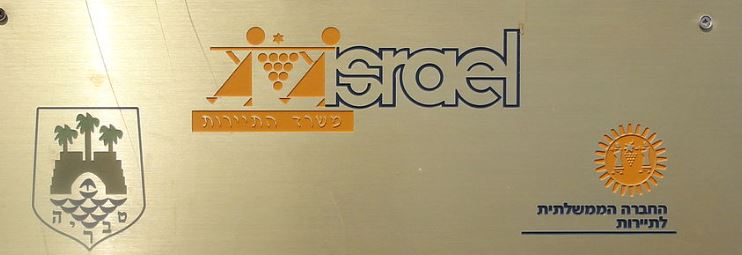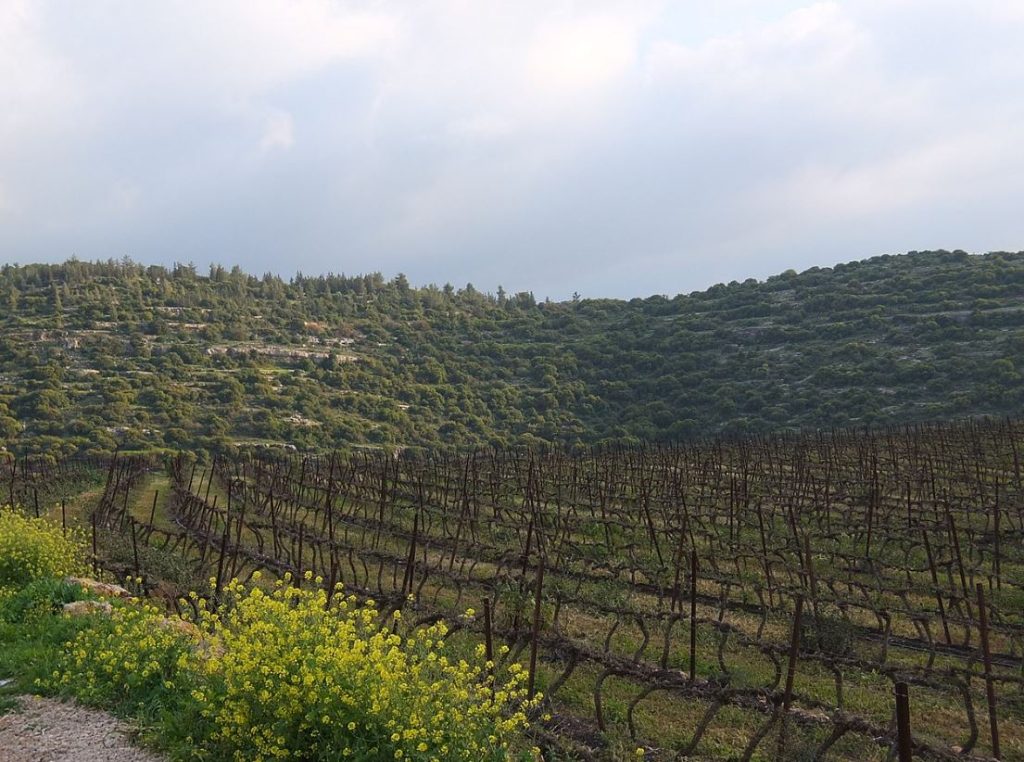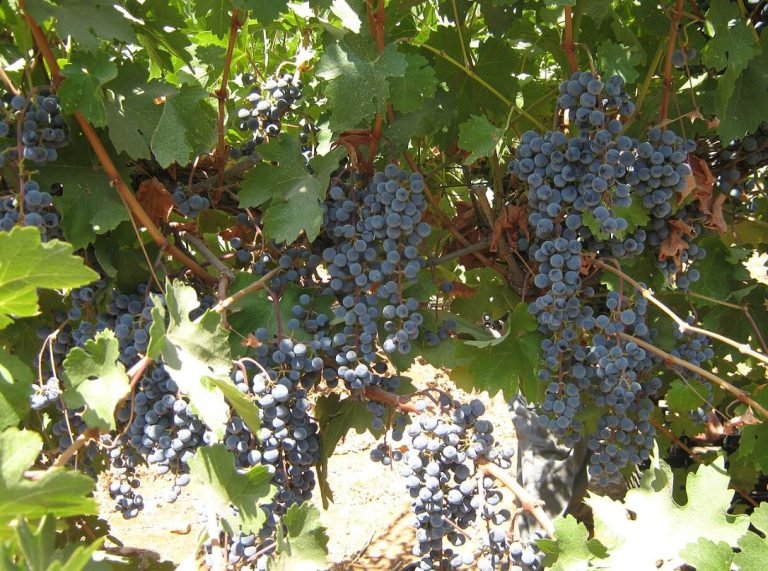The final chapters of Avodah Zarah move away from exotic deities and into the more complex laws of forbidden wine. We have learned many details about wine making, from how the grapes are harvested, to their pressing and being put into barrels. Wine is highly significant in Judaism (see here) but there would be no wine without grapes. What do our sources say about grapes and vineyards?
Grapes are one of the seven special species of the land of Israel:
“a land of wheat and barley, of vines, figs, and pomegranates, a land of olive trees and honey” (Devarim 8:8)
Like the other special species, the critical growing period for grapes is the months between Passover and Shavuot. They are ready for harvest by the end of the summer and there is a special word for their gathering, like there is for almost all of the seven species. For grapes it is batzir בציר, a word that is still used for grape harvesting today.
When the spies want to bring back a sign of the Land of Israel’s bounty, they choose a grape cluster, one that is so big it needs to be carried by two people. Fittingly, it is cut in a place called Nahal Eshkol, the riverbed of the grapes:
“They reached Nahal Eshkol, and there they cut down a branch with a single cluster of grapes—it had to be borne on a carrying frame by two of them—and some pomegranates and figs” (Bamidbar 13:23)

Ministry of Tourism logo
User:Mattes, Public domain, via Wikimedia Commons
The area of the country that was most famous in ancient times for grapes was the tribal portion of Judah. Even today, as you drive the roads between Jerusalem and Hebron, vineyards are everywhere – wild, cultivated, on terraces and in the plains. The lowlands (shephelah) are particularly full of boutique wineries today, and the grapes are grown nearby. Judah’s blessing from his father Jacob notes this abundance of viticulture:
אֹסְרִ֤י לַגֶּ֙פֶן֙ עִירֹ֔ה
וְלַשֹּׂרֵקָ֖ה בְּנִ֣י אֲתֹנ֑וֹ
כִּבֵּ֤ס בַּיַּ֙יִן֙ לְבֻשׁ֔וֹ
וּבְדַם־עֲנָבִ֖ים סוּתֹֽה׃
“He tethers his ass to a vine,
His ass’s foal to a choice vine;
He washes his garment in wine,
His robe in blood of grapes.” (Bereshit 49:11)
The verse has a parallel structure: a donkey (עירה) is tied to a vine (גפן) and the donkey’s son to a thick or longer vine (שרקה). Rashi explains that Judah’s land is flowing with wine like a fountain and that one branch will yield enough fruit to load up a donkey. Judah’s land also has many names that indicate that grapes were everywhere: besides places like Bet HaKerem (the house of the vineyard) and Ein Kerem (the spring of the vineyard); we also have Carmel (Kerem El, the vineyard of God) in the southern Hebron hills and Nahal Sorek, the riverbed of vines.

Vineyard in Mata in the Judean Hills
Davidbena, CC BY-SA 4.0 <https://creativecommons.org/licenses/by-sa/4.0>, via Wikimedia Commons
Grape growing was so popular and well known in Judah that the prophet Isaiah uses it for one of his best-known parables, the grapes that disobey their grower, despite his best efforts:
“Let me sing for my beloved
A song of my lover about his vineyard.
My beloved had a vineyard
On a fruitful hill.
He broke the ground, cleared it of stones,
And planted it with choice vines.
He built a watchtower inside it,
He even hewed a wine press in it;
For he hoped it would yield grapes.
Instead, it yielded wild grapes.” (Isaiah 5:1-2)
The rabbis took the theme of grapes and did what they do best – made them into a metaphor. Here the vineyard is symbolic of the Jewish people:
“Rabbi Shimon ben Lakish says: This nation is likened to a vine. The branches are the homeowners, [who provide financial support for the entire nation]. The clusters, these are the Torah scholars. The leaves [which protect the grapes], these are the ignoramuses, [who protect the Torah scholars]. The tendrils, these are the empty ones of the Jewish people.” (Chullin 92a)
A full, heavy grapevine can also be a symbol of fertility, as in this verse from Psalms:
“Your wife shall be like a fruitful vine within your house;
your sons, like olive saplings around your table” (Tehillim 128:3)
Anyone who has been to a Jewish wedding has probably heard the following phrase, that likens the grafting of good grapes to the melding of two pious families:
“the Sages taught: One should always sell all he has to marry the daughter of a Torah scholar and to marry off his daughter to a Torah scholar. This can be compared to grapes of a vine that become intertwined with grapes of a vine, something which is beautiful and acceptable” (Pesachim 49a)

נעה חן, Public domain, via Wikimedia Commons
We know that viticulture was practiced by Jews in the Land of Israel, in Biblical times and later. But what about in the Diaspora? Some scholars suggest that Rashi was a vintner, since he is clearly very familiar with all the stages of wine making. Dr. Haym Soloveitchik disagreed with this widespread assumption, claiming that the area of Troyes, where Rashi lived, was not suited for grapes. Even if Rashi did not make his living from wine making, he needed to know about it since the Jews of Europe had to make wine for their own consumption. As the halachic authority of his age, Rashi had to understand the complicated process of grape harvesting and wine making, and of course the many laws here in Avodah Zarah pertaining to Gentiles and wine.

Thirteenth century illustration of a monk tasting his wine
Public domain via Wikimedia Commons
L’Chaim!










